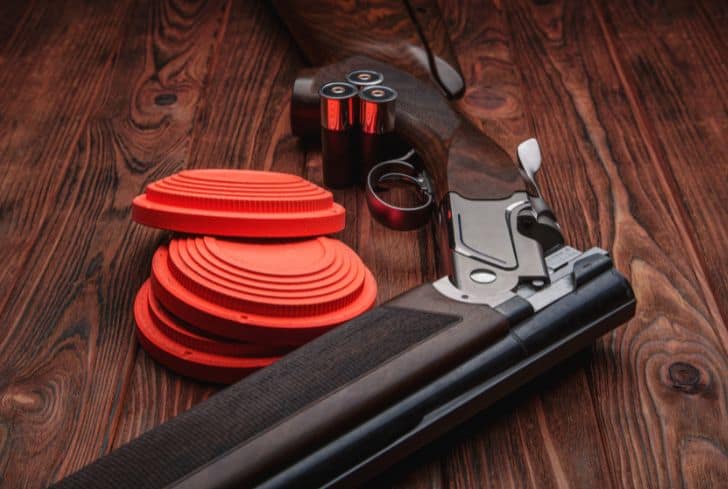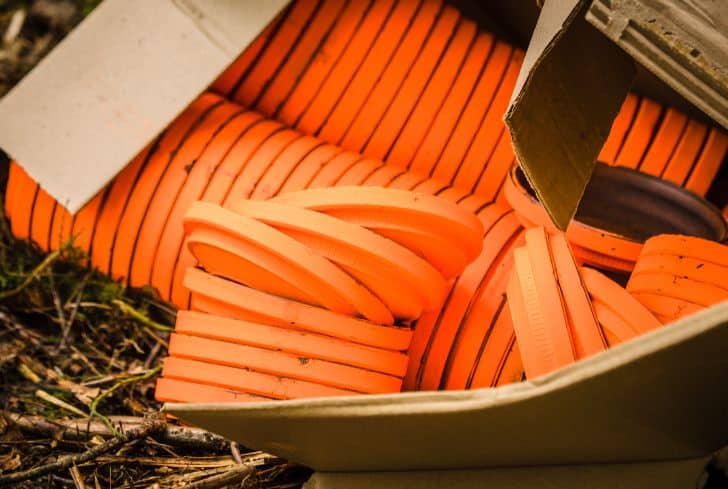Clay pigeons are famous tools used by shotgunners and hunters learning how to shoot, practicing, or brushing up their skills. Clay pigeons are used for aerial target practice, so they are fragile but brittle items that you only use once. When it shatters, there is little else you can do with it.
What are the impacts of multiple target practices worldwide, or even in America, on the ecosystem? What are clay pigeons made of, and is the material biodegradable? More importantly, is it harmful to the environment and animals?
In this blog post, we will explore if clay pigeons are biodegradable, what they are made of, and how long it takes for them to decompose if it is even possible. Don’t go anywhere!
What are Clay Pigeons and What are They Made of?
Clay pigeons are clay-based items created especially for the shooting range or shooting practice. They are thrown in the air and aimed at by hunters or shotgunners for skill improvement. Therefore, this material is not too strong, so the small pellets from a gun can easily shatter them.
A clay pigeon is not what you think it is at first. You probably envision a pigeon sculpted from clay.
Well, spoiler alert – clay pigeons are made from clay, but they are shaped like small frisbees for easy throwing and smashing. They are thrown in the air and shot at to increase shooting competence for whatever reason, whether for sportsmanship or food.
Clay pigeons are made of petroleum pitch, a suitable substitute for coal tar pitch. Its polycyclic aromatic hydrocarbons or PAHs are ten times lower, and it has a high carbon content, making it a preferable option.
The conventional clay pigeon is made from the petroleum-based pitch and 60 to 80 percent milled limestone. The presence of petroleum makes this the less sustainable option compared to newer clay pigeons. In addition, petroleum products are renowned for their ability to poison biodiversity, especially when they have undergone some manufacturing stages.
Clay pigeons are also made from materials like heavy spar, calcium bicarbonate, plaster, and fly ash. This is a step up from traditional clay pigeons, but it isn’t our most sustainable or environmentally friendly option either.
Instead, we believe biodegradable clay pigeons can be made from natural items that microorganisms can break down, like sugar, birdseed or grains, and water.
Are All Clay Pigeons Biodegradable?
No, not all clay pigeons are biodegradable. The traditional clay pigeon is made from limestone and petroleum pitch, and petroleum products don’t break down like organic matter. A clay pigeon is also painted, and paint molecules don’t biodegrade.
The earliest forms of clay pigeons are not biodegradable because of petroleum. It also contains paint that does not break down fast; when it does, toxic fumes leak into the ecosystem.
So, if you leave conventional clay pigeons in landfills, they begin to disintegrate when the harsh UV rays beat them down. And the result after two years, give or take, is 95 percent dissipation.
The rest of what used to be a compact brittle disc is usually microplastics from the petroleum pitch and paint molecules that haven’t broken down entirely.
The conventional clay pigeon is not biodegradable, but more eco-friendly options are emerging.
You can also use clay pigeons made from birdseed or grains combined with water and sugar. When this one shatters, the ingredients used in the manufacturing process are easily broken down by microorganisms. And if there are animals around the shooting range, they won’t choke on or get poisoned by the remnants of the clay pigeons.
There are non-toxic and biodegradable clay pigeons, but you shouldn’t confuse them as one and the same. They are different, and you can choose the most suitable one for your shooting range.
For instance, if animals frequent the area, it is best to choose non-toxic clay pigeons. Note that it may not be biodegradable unless you especially request that.
Are Champion Clay Pigeons Biodegradable?
Champion clay pigeons are biodegradable because of the material they are made from, but they will not break down completely. Therefore, we can say they are 95 percent degradable, and the biodegradation process is different from what happens in organic matter biodegradation.
For instance, Champion clay pigeon is made from natural resin and talc.
Natural resin is entirely biodegradable, which means it can be broken down by the activities of microorganisms in the soil. In contrast, talc is not biodegradable. Microbes like fungi and yeast have no business breaking it down and cannot.
Instead, talc will dissipate on its own. It will break down gradually because of weather factors like water, oxygen, and sunlight.
Moreover, Champion clay will not degrade completely. There will always be little pieces from non-renewable resources floating around the ecosystem.
Typically, in two years, decomposition should occur. But remember that talc will not completely break down, even when harsher weather accelerates biodegradation.

Can Clay Pigeons be Recycled?
The answer is often a resounding No. Clay pigeons cannot be recycled, well, unless you make inquiries at a construction company. But even then, you cannot recycle clay pigeons because they would be in many pieces after the shooters at the range end their practice.
So, do you want to gather the smaller pieces to tote to a recycling center?
If you attempt it, chances are the only place you will get an audience is a construction company. Here, the workers can crush the already crushed clay pigeon pieces into smaller pieces for construction purposes. It can be used to repair roads or used as other alternatives for problems that crushed limestone can solve.
But if we are being realistic, there are fewer places, if not none, that solely recycle clay pigeons. It is not a cost-effective business because there is little you can do with pieces of clay from a shooting range.
It doesn’t make sense to recycle the biodegradable one, either. After all, it is made from natural ingredients that the ecosystem can benefit from. It is better if it breaks down naturally; this is better than diverting energy and manufacturing processes to already crushed clay pigeons.
Suffice it to say that you cannot recycle clay pigeons even though you want to. There is an upside, though – you can locate a construction center if you care about sustainable living. Let them know you have a lot of clay pigeons, yes, a lot because that is the only way it makes sense to divert resources to recycling and would like to recycle them.
Then, it will be okay to crush them into smaller pieces and use them for construction. But otherwise, there is little you can do about your shattered clay pigeons.
At best, leave them on the shooting field and cross your fingers that wild animals don’t choke on them and that the environment doesn’t bear the brunt of its toxic decomposition stage.
Are Clay pigeons Bad for the Environment?
Yes, the traditional clay pigeon is bad for the environment. It is made from milled limestone and petroleum pitch; while the former ingredient may not harm the environment, the latter is not nearly as eco-friendly. Petroleum pitch is still a form of plastic that severely pollutes and puts biodiversity in danger.
On the other hand, biodegradable clay pigeons have a better impact on the environment.
The milled limestone will eventually revert to its natural form, but plastic doesn’t biodegrade or break down completely. It becomes microplastic, then nanoplastic, then a permanent resident of the environment.
Apart from slowly poisoning the ecosystem, the shattered clay pigeons may also pose health risks to animals that try to feed on them. They may choke on it or get poisoned from the polymer content.
Are Clay Pigeons Harmful to Animals?
Yes, clay pigeons are harmful to animals if they are non-biodegradable. For one, their size may cause a choking hazard. It could also cause an intestinal blockage which leads to death.
However, if we are optimistic, clay pigeons may not be harmful to animals, especially when made from sustainable resources. If anything, they can even be a food source.
Of course, you must know there are two types of clay pigeons: toxic and non-toxic. The toxic kind is bad for wildlife; it has a high chance of poisoning or choking them.
On the other hand, biodegradable or non-toxic clay pigeons are safer for animals. They break down fats, so they may even decompose before a wild animal sets its sight on them.
There are clay pigeons that are created with natural items like sugar and birdseed. Those are edible for animals; a bonus because you don’t need to bother with the cleanup.
But when it is manufactured with ingredients like petroleum pitch, bad for animals.
Do Clay Pigeons Decompose?
Yes, clay pigeons decompose—both the biodegradable and the nonbiodegradable break down gradually. But again, a biodegradable clay pigeon will deteriorate immediately after it shatters because microbes derive pleasure and nutrients from breaking it down.
Biodegradable clay pigeons are manufactured with resin instead of petroleum pitch used for nonbiodegradable ones, ensuring that the material breaks down.
Clay pigeons Will decompose, regardless of the material used in making them. However, we shouldn’t expect it to deteriorate entirely if it is the conventional clay pigeon. After all, that group’s clay, sand, limestone, and other resources can never truly break down.
Of course, a conventional clay pigeon that’s been shattered will decompose faster because it has less surface area, making it easier for nature to work on it.
However, regardless of how harsh the seasons get, petroleum pitch is incapable of breaking down completely.
It becomes microplastics and sticks around the ecosystem. We recently discovered a way to filter out microplastics, a beacon of hope for the environment.
But again, we can also protect biodiversity by reducing our consumption of plastic materials, and your clay pigeons can help you make a sustainable transition.
Suppose you have chosen a biodegradable clay pigeon brand. Then, you will know that when you leave the shooting range, your presence and activities haven’t dealt damaging blows to the place.
This is because biodegradable clay pigeons are safer; they break down faster and do not poison the ecosystem.
How Long Does it Take to Decompose Clay Pigeons?
It takes about two years for clay pigeons to decompose. If it is biodegradable, it happens faster. The timeframe it takes clay pigeons to decompose depends on the location, weather conditions, and sunlight exposure.
Conclusion
The green movement doesn’t have to affect your favorite activities. If anything, sustainability is to find the most suitable alternatives to our harmful consumption habits and change them to improve our lives and the ecosystem.
Instead of the conventional clay pigeon that may harm the environment, why not explore your biodegradable options? The time has come to choose sustainable products; don’t hold back!






